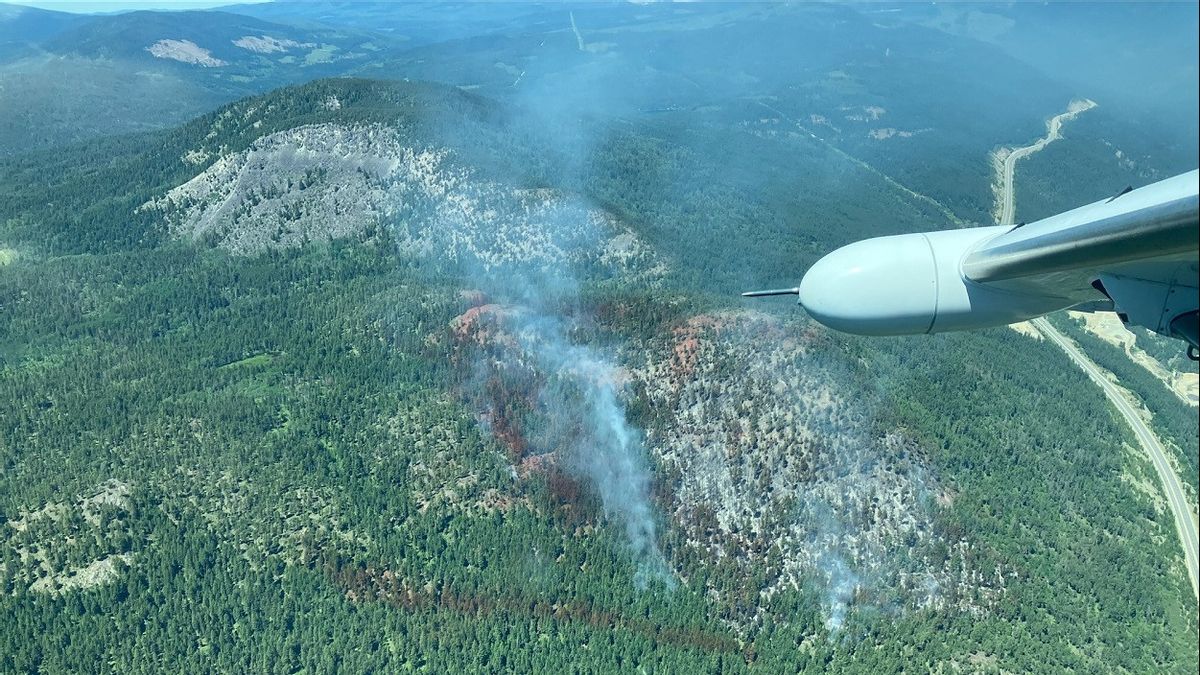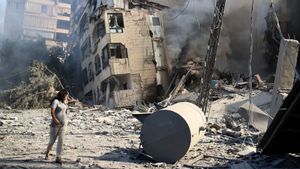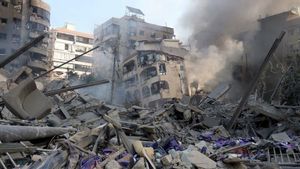JAKARTA - A forest fire continued to burn across Canada on Thursday, as the country experienced its worst start to the season of fire, forcing thousands of people to flee their homes and sending plumes of smoke rising into cities in the United States.
About 3.8 million hectares (9.4 million acres) of forest have been burned, about 15 times that of an average of 10 years, according to Federal Emergency Preparedness Minister Bill Blair. Meanwhile, warm and dry conditions are expected to continue in the next few months.
Although forest fires are common in Canada, it is not uncommon for fires to occur simultaneously in the east and west, depleting fire resources, forcing the Canadian government to send a military to help.
In addition, hundreds of US firefighters arrived in Canada to help and more were on their way.
Meanwhile, Canadian Prime Minister Justin Trudeau blamed climate change.
"This fire affects our daily routine, life and livelihood, and air quality," PM Trudeau said on Twitter.
This wildfire season has already been devastating for communities across the country. We’re taking action to keep people safe, to support those affected, and to make sure the provinces and territories have the assistance they need. Here’s the latest on the work we’re doing: pic.twitter.com/1pzdMZPEAP
— Justin Trudeau (@JustinTrudeau) June 6, 2023
This wildfire season has already been developing for communities across the country. We're taking action to keep people safe, to support those affected, and to make sure the provinces and terrorists have the assistance they need. Here's the late on the work we're doing: pic.twitter.com/1pzdMZPEAP
Some of the worst fires occurred in eastern Quebec province, causing more than 11,000 people to flee their homes there.
Meanwhile, the forest fire season started earlier than usual in Alberta last month and burned a large area that hit record, while Nova Scotia continued to fight against the biggest blaze ever.
In parts of the Pacific's British Columbia Province, which faces the second-largest forest fires in history, the air temperature is expected to hit 33 Celsius (91 Fahrenheit) on Thursday, before thunderstorms and heavy rains are predicted to arrive on Friday.
While forest fires have eased in Alberta, Canada's oil and gas industry center, more than 3,000 people are still under evacuation orders and heat warnings apply in the southern part of the province.
Rob Schweitzer, executive director of BC Wildfire, said lightning strikes could trigger more fires in the dry forest of kerontang. The impact will depend on how much rainfall comes along with the storm.
"When you get 150 or 200 lightning strikes in one day from lightning crossing the province, it's impossible to have enough resources to extinguish them all," he said.
The BlueSky Canada smoke forecast website shows forest fires spreading across much of the country on Thursday. It will make smoke even thicker in Ottawa, Toronto, Cleveland and Pittsburgh and remain thick in other cities along the east coast of the United States, including New York.
The English, Chinese, Japanese, Arabic, and French versions are automatically generated by the AI. So there may still be inaccuracies in translating, please always see Indonesian as our main language. (system supported by DigitalSiber.id)













